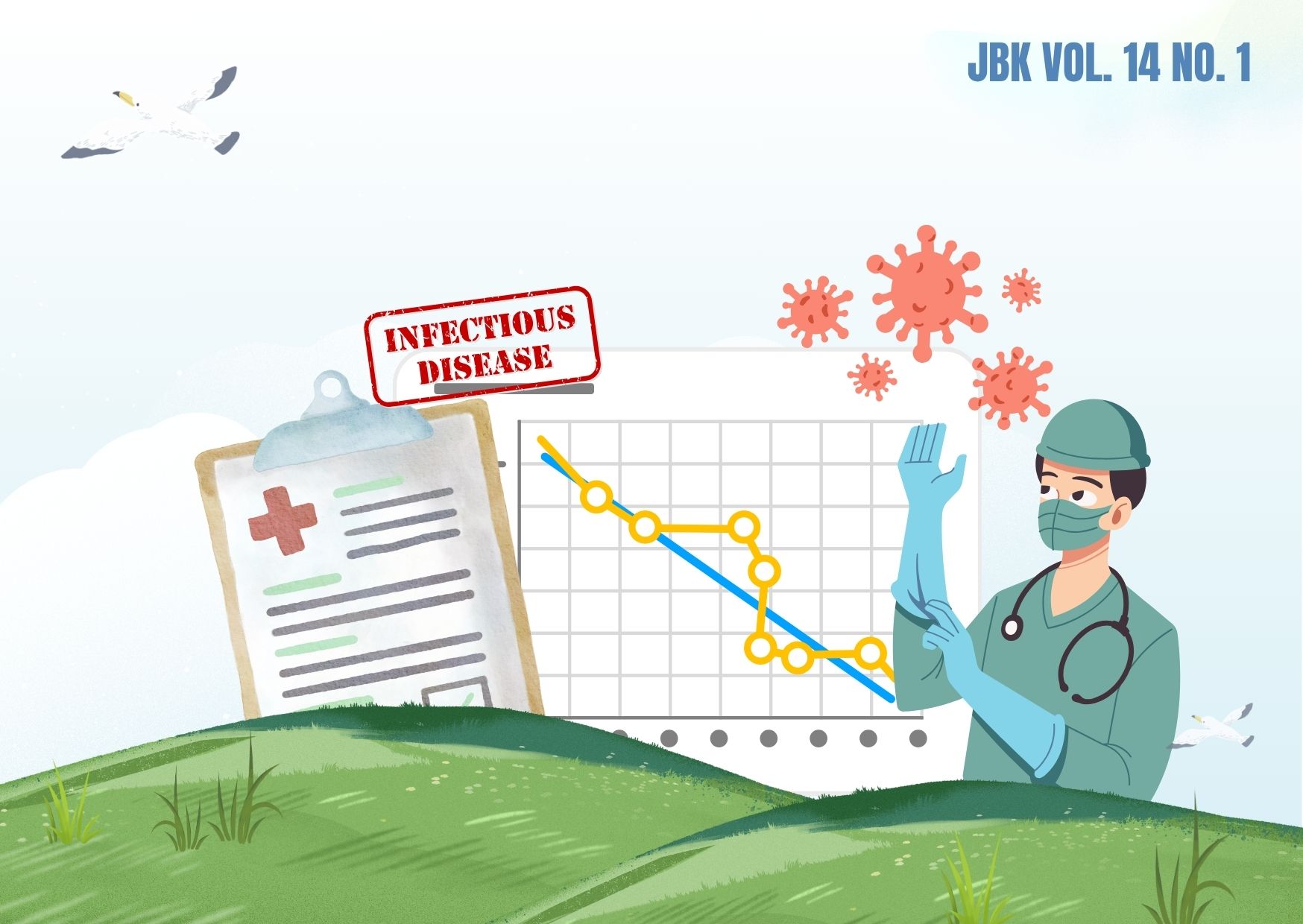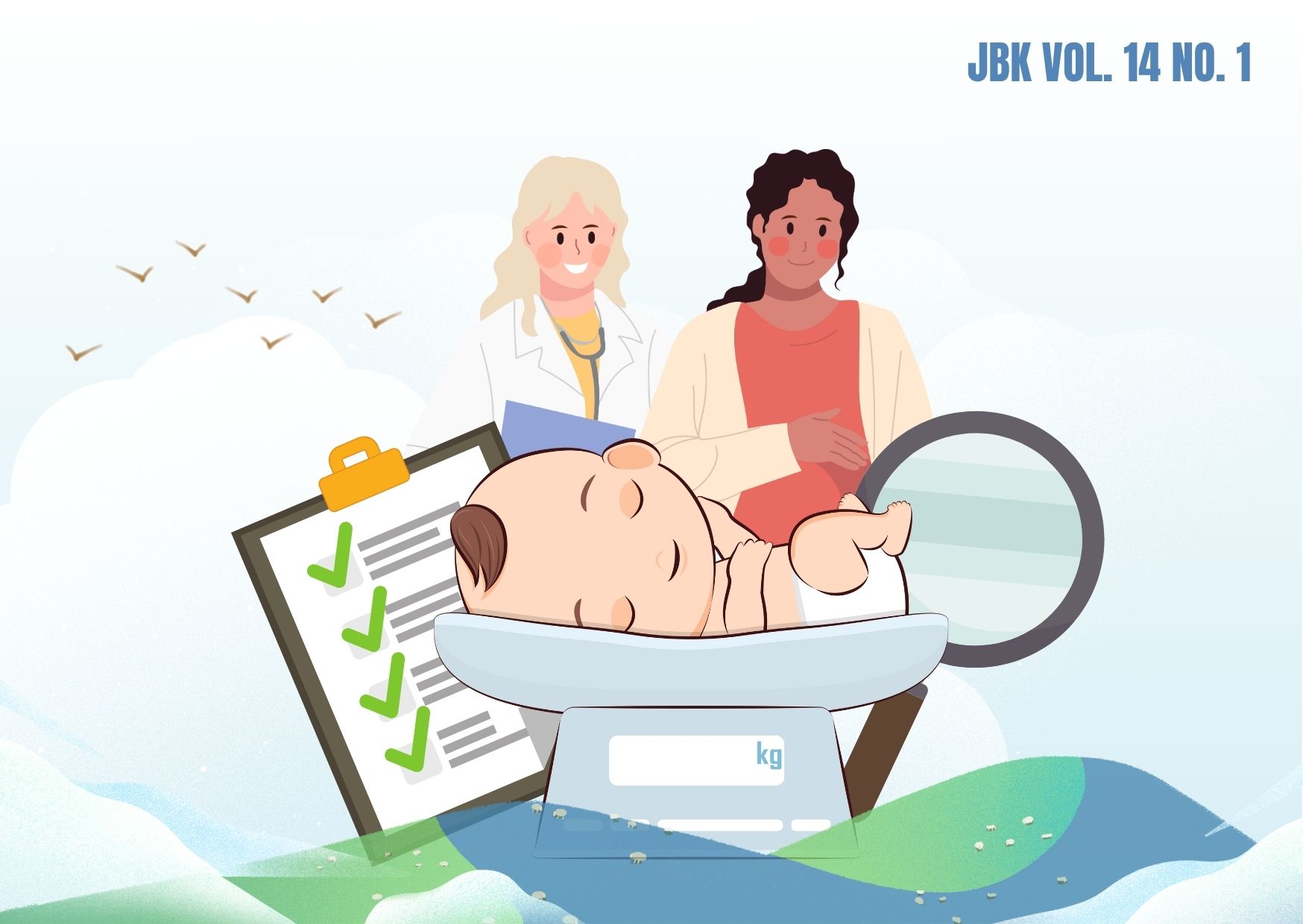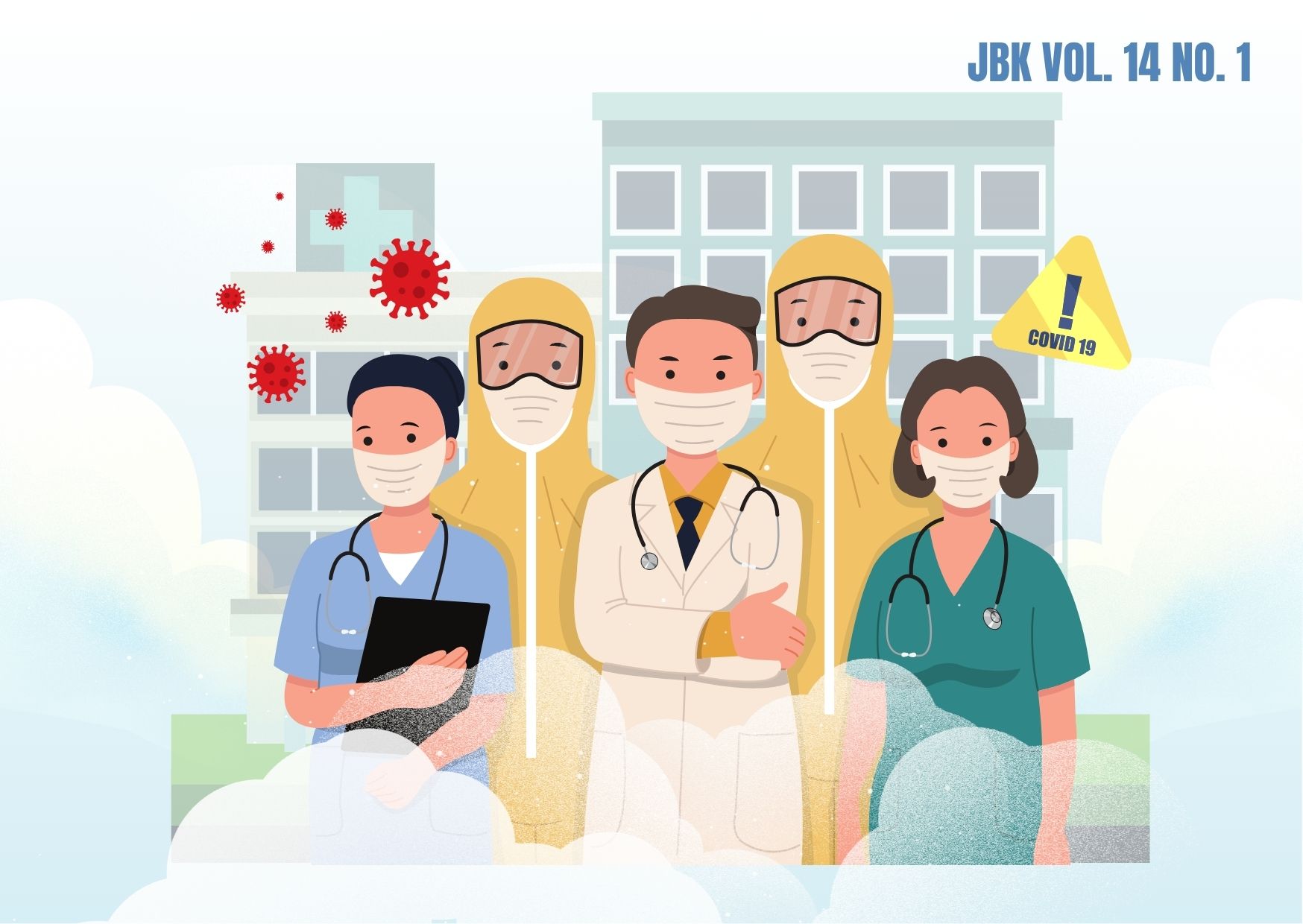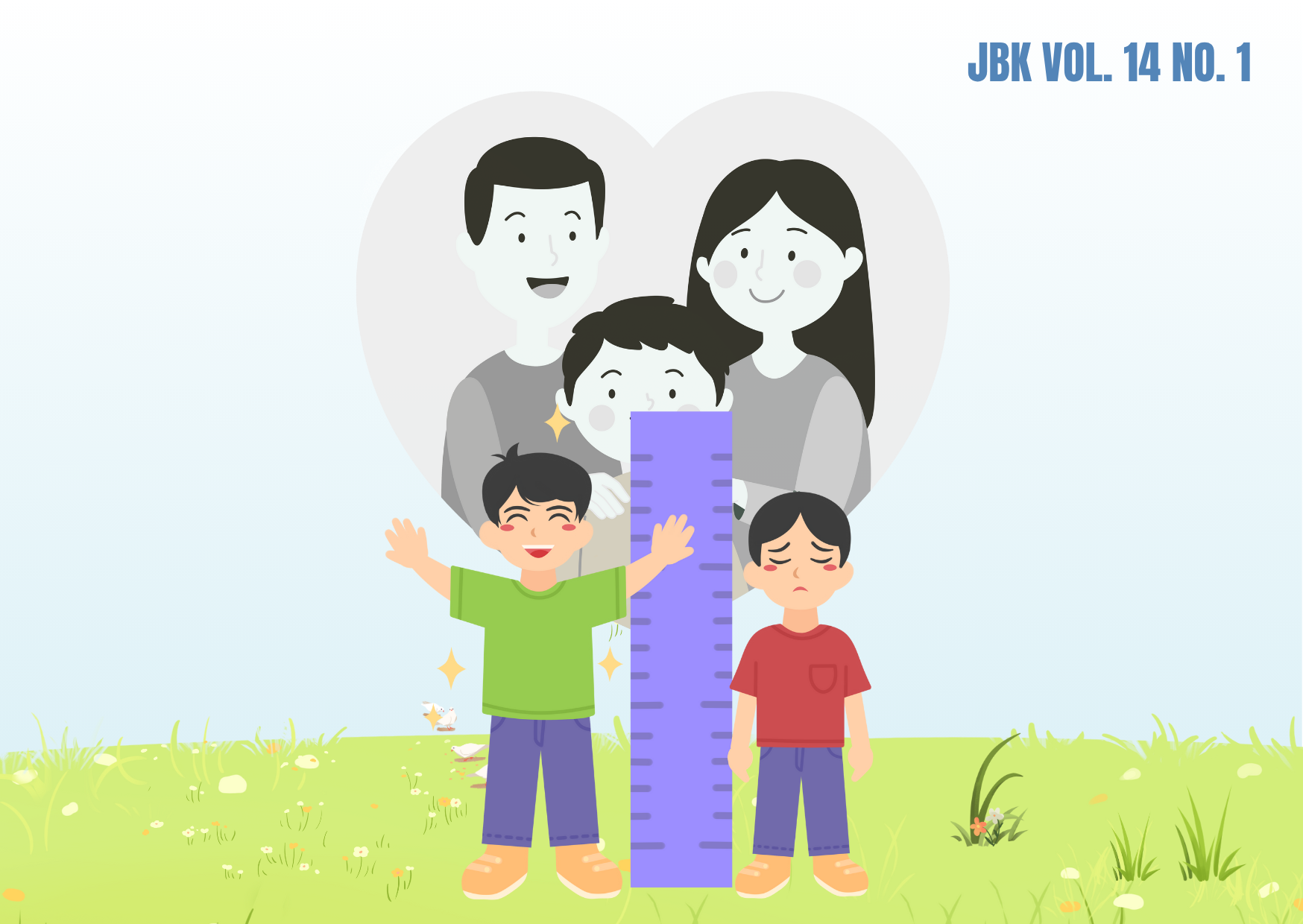SOCIO-ECONOMIC STATUS AND FAMILY NUTRITION INFLUENCE ON STUNTING AMONG CHILDREN UNDER FIVE IN THEBELU DISTRICT EAST NUSA TENGGARA PROVINCE
Downloads
Stunting is a condition observed in children under the age of five, characterized by a visibly undernourished physique, often a slender frame with a distended abdomen, or a shorter stature and lighter weight compared to their peers. This malnutrition-induced growth impairment can potentially hinder optimal brain development, thereby compromising cognitive potential. Various factors contribute to stunting in this age group, including demographic, socio-economic, and residential conditions. This research aims to uncover the causal relationship between social and economic status and nutrition variables in relation to the likelihood of stunting. The study focuses on 100 households with children under five in Belu Regency, specifically in Atambua City and Halilulik Village. Employing ordinary least square analysis, the study finds a significant relationship (p=0.002) between residential conditions, education, occupation, and nutrition variables in relation to stunting. This relationship is moderately strong, as indicated by an R-value of 0.427, while the R² value stands at 0.182. Notably, the likelihood of stunting is significantly higher for children whose mothers have an education level of ≤ Junior High School, at 8.081 times, in comparison to those with High School-educated mothers, who are at 8.159 times higher risk, than mothers with a University/Diploma education level. Additionally, children with lower nutritional intake are 4.913 times more likely to experience stunting compared to their well-nourished counterparts, while those from low-income households face a 1.849 times higher risk compared to children from higher-income families.
Seran S. Hubungan antara Pendidikan, Pengangguran, dan Pertumbuhan Ekonomi dengan Kemiskinan. J Ekon Kuantitatif Terap [Internet]. 2017;10(1):59–71. Available from: https://doi.org/10.24843/JEKT.2017.v10.i01.p07
Okuputra MA, Nasikh. Pengaruh Inovasi Daerah terhadap Kemiskinan. Inov J Ekon Keuang dan Manaj [Internet]. 2022;18(1):159–66. Available from: http://dx.doi.org/10.30872/jinv.v18i1.10379
Hasan Z. The Effect of Economic Growth and Human Development Index on Poverty in Indonesia. J Econ Sustain [Internet]. 2021;3(1):42–53. Available from: https://doi.org/10.32890/jes2021.3.1.5
Badan Pusat Statistik. Badan Pusat Statistik. 2012. Persentase Penduduk Umur 15 tahun ke Atas Menurut Klasifikasi Desa, Jenis Kelamin, dan Jenjang Pendidikan Tertinggi yang Ditamatkan, 2009-2023. Available from: https://www.bps.go.id/id/
Kapisa MB, Bauw SA, Yap RA. Analisis Tingkat Pendidikan dan Jenis Pekerjaan Terhadap Pendapatan Kepala Keluarga (KK) di Kampung Manbesak Distrik Biak Utara Provinsi Papua. Lensa Ekon [Internet]. 2021;15(1):131–50. Available from: https://doi.org/10.30862/lensa.v15i01.145
Pusparisa Y. Databoks. 2020. Pengeluaran Kesehatan per Kapita Negara di ASEAN.
Asian Development Bank. Databoks. 2021. Prevalensi Stunting Balita Indonesia Tertinggi ke-2 di Asia Tenggara.
Suratri MAL, Putro G, Rachmat B, Nurhayati, Ristrini, Pracoyo NE, et al. Risk Factors for Stunting among Children under Five Years in the Province of East Nusa Tenggara (NTT), Indonesia. Int J Environ Res Public Health [Internet]. 2023;20(2):1640. Available from: https://doi.org/10.3390/ijerph20021640
Al-Mansoob MAK, Masood MSA. The Relationship between Stunting and Some Demographic and Socioeconomic Factors among Yemeni Children and Adolescents. Adv Public Heal [Internet]. 2018;2018(1):6. Available from: https://doi.org/10.1155/2018/5619178
Tongkonoo I, Baderan DWK, Solang M. Hubungan Faktor Sosial, Ekonomi, dan Lingkungan dengan Kejadian Balita Stunting. Jambura J Heal Sci Res [Internet]. 2021;3(2):256–76. Available from: https://doi.org/10.35971/jjhsr.v3i2.10736
Hasanah S, Handayani S, Wilti IR. Hubungan Sanitasi Lingkungan Dengan Kejadian Stunting Pada Balita di Indonesia (Studi Literatur). J Keselamatan, Kesehat Kerjadan Lingkungan(JK3L) [Internet]. 2021;2(2):83–94. Available from: https://doi.org/10.25077/jk3l.2.2.83-94.2021
Das S, Chanani S, Shah More N, Osrin D, Pantvaidya S, Jayaraman A. Determinants of stunting among children under 2 years in urban informal settlements in Mumbai, India: evidence from a household census. J Heal Popul Nutr [Internet]. 2020;39(1):10. Available from: https://doi.org/10.1186/s41043-020-00222-x
Adyas A, Handayani SRW, Djamil A, Kustiani A, Dalimunthe NK. Analysis of Risk Factors of Stunting in Toddlers. J Kesehat [Internet]. 2023;14(1):172–83. Available from: https://doi.org/10.26630/jk.v14i1.3701
Ali A, Hussain SA. The Impact of Household Socio-Economic Status on Child Stunting in Pakistan. In: 18th International Conference on Statistical Sciences [Internet]. Lahore; 2021. p. 93–102. Available from: https://www.researchgate.net/publication/352994050_The_impact_of_household_socio-economic_status_on_child_stunting_in_Pakistan
Hajdari A, Fetai B. The Effect of the Level of Education on Employment: Evidence from Western Balkans. Econ Altern [Internet]. 2022;(2):364–75. Available from: https://doi.org/10.37075/EA.2022.2.11
Mou W. A Quantitative Analysis of the Relationship between Education Level and Income. J Educ Humanit Soc Sci [Internet]. 2023;12:160–6. Available from: https://doi.org/10.54097/ehss.v12i.7617
Scheffler C, Greil H, Hermanussen M. The association between weight, height, and head circumference reconsidered. Pediatr Res [Internet]. 2017;81(5):825–30. Available from: https://doi.org/10.1038/pr.2017.3
Riaz S, Condon L. The Experiences of Breastfeeding Mothers Returning to Work as Hospital Nurses in Pakistan: A Qualitative Study. Women and Birth [Internet]. 2019;32(2):e252–8. Available from: https://doi.org/10.1016/j.wombi.2018.06.019
Hanifah L, Sab’ngatun. Analisis Pemberian Asi Eksklusif Terhadap Status Gizi Balita. J Kebidanan Indones [Internet]. 2020;11(1):116–23. Available from: https://doi.org/10.36419/jkebin.v11i1.332
Agustin L, Rahmawati D. Hubungan Pendapatan Keluarga dengan Kejadian Stunting. Indones J Midwifery [Internet]. 2021;4(1):30–34. Available from: https://doi.org/10.35473/ijm.v4i1.715
Copyright (c) 2024 Jurnal Biometrika dan Kependudukan (Journal of Biometrics and Population)

This work is licensed under a Creative Commons Attribution-NonCommercial-ShareAlike 4.0 International License.
Copyright©2022 Jurnal Biometrika dan Kependudukan (Journal of Biometrics and Population)
This work is licensed under a Creative Commons Attribution-NonCommercial-ShareAlike 4.0 International License.
1. Copyright of all journal manuscripts is held by the Jurnal Biometrika dan Kependudukan.
2. Formal legal provisions to access digital articles of the electronic journals are subject to the provision of the Creative Commons Attribution-ShareAlike license (CC BY-NC-SA), which means that Jurnal Kesehatan Biometrika dan Kependudukan to keep, transfer media/format, manage in the form of databases, maintain, and publish articles.
3. Published manuscripts both printed and electronic are open access for educational, research, and library purposes. Additionally, the editorial board is not responsible for any violations of copyright law.



































